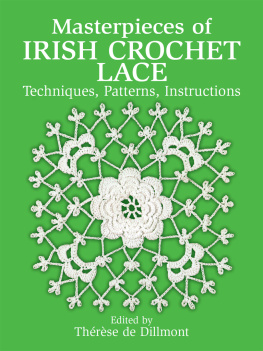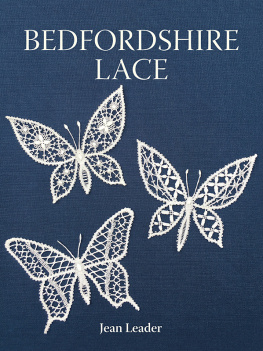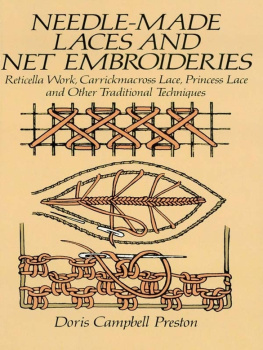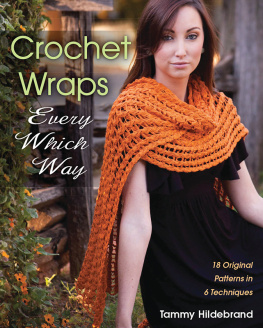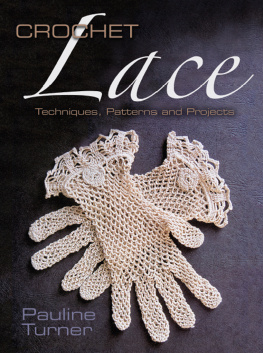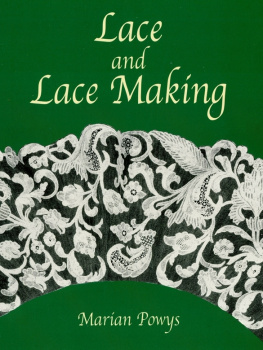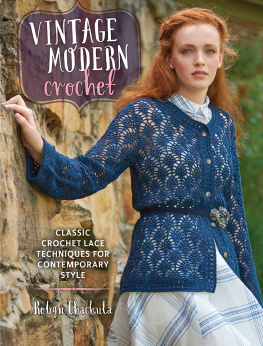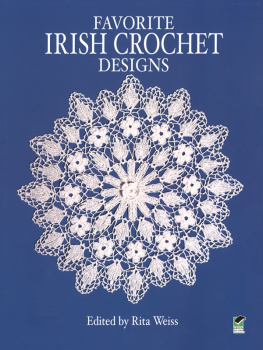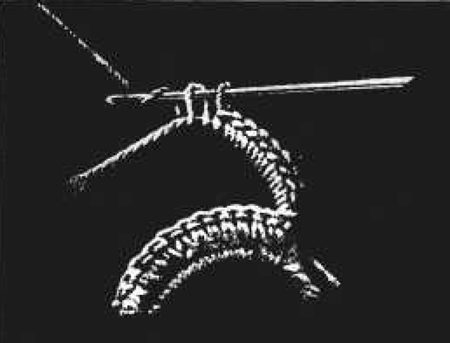de Dillmont - Masterpieces of Irish Crochet Lace : Techniques, Patterns, Instructions
Here you can read online de Dillmont - Masterpieces of Irish Crochet Lace : Techniques, Patterns, Instructions full text of the book (entire story) in english for free. Download pdf and epub, get meaning, cover and reviews about this ebook. City: Newburyport, year: 2014, publisher: Dover Publications, genre: Home and family. Description of the work, (preface) as well as reviews are available. Best literature library LitArk.com created for fans of good reading and offers a wide selection of genres:
Romance novel
Science fiction
Adventure
Detective
Science
History
Home and family
Prose
Art
Politics
Computer
Non-fiction
Religion
Business
Children
Humor
Choose a favorite category and find really read worthwhile books. Enjoy immersion in the world of imagination, feel the emotions of the characters or learn something new for yourself, make an fascinating discovery.
- Book:Masterpieces of Irish Crochet Lace : Techniques, Patterns, Instructions
- Author:
- Publisher:Dover Publications
- Genre:
- Year:2014
- City:Newburyport
- Rating:4 / 5
- Favourites:Add to favourites
- Your mark:
Masterpieces of Irish Crochet Lace : Techniques, Patterns, Instructions: summary, description and annotation
We offer to read an annotation, description, summary or preface (depends on what the author of the book "Masterpieces of Irish Crochet Lace : Techniques, Patterns, Instructions" wrote himself). If you haven't found the necessary information about the book — write in the comments, we will try to find it.
In recent years Irish crochet lace has enjoyed a tremendous revival among needleworkers. Nearly lost in the early twentieth century when machines took over the manufacture of most lace, the craft is now being rediscovered by enthusiasts who recognize it not only as one of the most durable, serviceable, and beautiful forms of lace but also as a type that provides a unique opportunity to be creative.
This inexpensive volume presents authentic motifs and grounds used by the most skilled Irish needleworkers of the late nineteenth century. Collected and edited by one of the best-known experts of the time, Thrse de Dillmont, it offers patterns, complete instructions, and/or detailed photographs for 30 motifs, 12 intricate grounds, and various traditional footings and borders.
Crocheters can use these versatile motifs of delicate raised flowers, leaves, sprays, and more to transform ordinary bedspreads, doilies, tablecloths, and clothing into works of art to be treasured for years. Make your own unique designs for new curtains, fancy collars, delicate cuffs, and so much more. Each of these motifs can be altered in shape, enlarged, diminished, or combined in new patterns theres virtually no limit to the results you can produce.
Beginners should practice making individual motifs before attempting an entire piece of lace, and experienced crocheters may want to follow the directions exactly before experimenting to form new motifs. With practice, you can invent your own patterns just by employing these authentic, elemental motifs and their complementary grounds. A new introduction relates the history and technique involved in Irish crochet lace, and a conversion chart translates outdated terms.
de Dillmont: author's other books
Who wrote Masterpieces of Irish Crochet Lace : Techniques, Patterns, Instructions? Find out the surname, the name of the author of the book and a list of all author's works by series.

